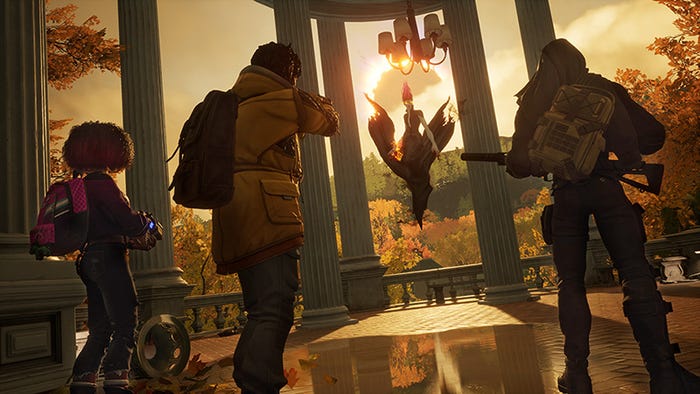Conker's Bad Fur day as a Case Study for Cult Hits.
Despite poor sales, Conker's Bad Fur Day manages to become a great hit and a legendary game to the few people who laid hands on them. This paper attempts to delve into why this is.

Conker’s Bad Fur Day is, to phrase it in a fitting way, a “pretty *@#%in’ fantastic game.” It had nice and tight controls, and at the time of its release, boasted one of the highest quality graphics of its time. Metacritic gave the game a score of 93/100, and stated comically, “unless you're a fan of violence, foul language, and racy innuendo, you'd best steer clear of this one.” But as good as the game was, much to the irony of the above comment, Conker’s Bad Fur Day did not end up performing particularly spectacularly in regards to sales, perhaps due to the limited advertising of the game, and perhaps also due to the fact that the game was released towards the end of the Nintendo 64’s lifespan (Conker’s Bad Fur Day was released in 2001, the GameCube would be released worldwide in 2002). Despite this, however, Conker’s legacy still stands among many as one of the best games having ever been created, for its courageous new, dark, and, raunchy twist on the popular animated “children’s video game” genre we grew up with and loved, featuring Mario, Donkey Kong, and other famous gaming likenesses. It was a game that respected the fact that the audience that they had once catered to were growing up, and spectacularly changed up their style to accommodate them. This is perhaps one of the games that most accurately shows that the quality of games are not determined by how much they sell.
As previously stated, one of the greatest elements of Conker’s Bad Fur Day is it’s generous yet tasteful use of violence, bad language and innuendos, but this game was not always set to be like this. A brief history of the game presented by Chad and Anthony’s as an installment of their History of Gaming series tells that Conker originally made his first appearance in Diddy Kong Racing (which incidentally also had the character Banjo-Kazooie that would star in his own game). Conker eventually stars in his own game titled Conker’s Pocket Tales for the Gameboy color, a much more child-friendly title in comparison to Bad Fur Day (BFD). BFD was set to appeal to a similar audience, but Rare was concerned that then the game would be far too similar to other titles of the same style, like Donkey Kong 64 or Banjo Kazooie. Consequently, the game shifted to a much more adult theme, appealing to the college demographic. As part of their advertising campaign, IGN states in their article, “Conker Goes on Tour with Playboy,” that the game was promoted with “a tour of college campuses across the country with the best-known name in adult entertainment, Playboy magazine.”
Of course, this new direction for the game was met with some backlash. Also stated in the History of Gaming episode on BFD, Nintendo Power had no desire to acknowledge the game due to the brand being geared towards child and family-friendly content. It was likely due to this reason along with the reasons previously mentioned that the game itself failed in sales, and yet despite this the game still received remarkable reviews from many different critics and received critical acclaim from sites other than metacritic as well.
So then, given that BFD has been so well praised by authority figures who we would like to believe knows what’s up about good games, why is it that it sells so poorly? Well actually, this phenomenon is not particularly uncommon, and something to this effect actually occurs relatively frequently, though perhaps not to the extreme that BFD has experienced. Matpat, author of the series known as Game Theory, remarks about the many articles that exist online which state that the lack of innovation in game companies will be their undoing. He then goes on to point out statistics that empirically show that gamers spend more on games that “fit the formula, so to speak.” It is possible to argue that these statistics may not be entirely accurate because they don’t take into account console availability (the Wii sold far more consoles than the Nintendo 64), and thusly the individual game sales are not scaled appropriately, but even without this we can still see from the previous chart that New Super Mario Bros. Wii, the 2D platforming title for the Wii, sold a little over two times more than its innovative counterpart, Super Mario Galaxy. Within this chart, this also holds true for Super Mario World and Super Mario Bros. 3 versus SMW2: Yoshi’s Island, and so on, and perhaps this is a necessary evil; Matthew points out that it’s important to have these kinds of tradeoffs between innovative games and spinoff games that consistently sell. “For every Pikmin, there needs to be a [Super Smash Bros. Brawl] to fund it, for every Wii U, there’s a handheld that will deflect the losses.”
So then how does all of this relate to Conker’s Bad Fur Day? Well, everything really. When we begin to put together the ideas and thought processes behind the production of Conker’s BFD along with the statistical history of sales of innovative games versus “rehashed” ones, it’s difficult to ignore how closely the two relate to each other. BFD was redesigned with the belief that they didn’t want the game to be like all of the other games that Rare currently had out. They wanted to make it fresh and interesting, and they wanted to cater to a new crowd. So they did that. And matching what the statistics have shown, it did not sell, though perhaps even more so because the changes in themes were much more pronounced. The bigger question though is, is it a bad game? And the answer is no, it is not. Not only were the reviews of the game excellent, but if you ask any average gamer who happens to have played the game, they will also agree that Conker’s BFD is a fairly good, if not incredible game, precisely because of their well-executed efforts at innovation.
So I have spent a significant amount of time simply talking about Conker’s Bad Fur Day in regards to its sales, reviews, and general style, but if you have yet to play this game, you’re probably wondering what this game even is, and more to the point, why would a game that is not only violent, but also vulgar and raunchy even be good? To start off, the basic premise of the game is that Conker, an anthropomorphic red squirrel wakes up hung over after a night of drinking with his buddies, standing up his girlfriend Berri. Your goal is now to find a way to get him back home, dealing with all of the shit that gets thrown at your face along the way, literally, collecting any wads of cash you find along the way. Meanwhile, the king of the land finds that his table has a missing leg which is causing his milk to spill over, and he agrees with the advice of his assistant that the best fix is to find a red squirrel, as their height would be just tall enough to keep the table standing right and supplement the missing/broken leg.
So then with such a wacky synopsis as well as some of the downright odd and disgusting snippets of the game you’ve seen thus far, how on earth does this manage to become a good game? Well, beyond excellent graphics and controls for its time, this game was an incredibly culturally intelligent one, hosting a huge variety of movie references. The IDBM website showcases all of the connections that Conker’s Bad Fur Day has to other movies and games, and there are many. At a glance, one might notice that the entire opening sequence of BFD is a clear homage to the opening sequence of A Clockwork Orange. Towards the end of the game your objective becomes to rob a bank (god knows how we got from getting home to Conker’s girlfriend to heisting), and the gunfight sequence therein is very much a spoof of the Matrix. Some dialogues in the boss fight of the Great Might Poo are spoofs of dialogue from The Wizard of Oz. Not only are these references plentiful and diverse, they’re also intelligently included in such a way that they don’t seem out of place and forced. As a player who played through this game not having been exposed to many movies, I didn’t feel at all removed from the game or detached from all of the references embedded within the game, and it was a pleasant surprise to go through the game afterwards and discover them all.
However, a video game is not made with simply references to other games. As a whole, the jokes and humor that are made in the game are well crafted and genuinely funny. Not only that, but as a direct result of attempting to cater to a different audience, Rare was able to attempt things with their humor and map design that no other game would have even dared attempt. No children’s video game would have even considered throwing in a zombie invasion, a poo level, and a gory war area (which, mind you, contains a Saving Private Ryan spoof) all in the same game, but because Rare wasn’t bound to that restraint, they didn’t need to worry about what the children would think. And this was perhaps one of the things BFD excelled at: knowing their audience and creating a game designed just for them.
So as a result of Rare’s design choices we are left with a game that presents itself proudly, not holding anything back (well, save censors for some of the nastier words, but still). Everyone who has played this game is aware of this, and it is for this reason that BFD holds such high regards in the hearts of those who have played it. It is this reason that Conker’s Bad Fur Day is probably the only game of its kind, now and likely for a very long time, given the current state of gaming, which prioritizes either family friendly casual gaming with lighthearted themes or especially serious hardcore games with attempts at deep and complex themes. BFD was a game that managed to accomplish both of these things to some degree, as it presented us with a childish art style while bringing us content that was funny and adult themed. One can argue that it even does have some very serious and dark themes, as the end of the game finds that Conker becomes a millionaire and king of all the land, and yet has nothing to show for it because he got caught up in his greed and forgot to bring back his girlfriend, Berri when he had the chance to. All of these things create a game that is an incredible experience, but exclusively for the people who were meant to play it, whether or not that audience would be vast or not, and as a result, the followers gained can be sure to remain loyal to the franchise.
Nowadays we seems to be caught up in the argument of what games are popular and which games aren’t, and use that to decide which games are good. Conversely, we see many instances where people get upset that the same games continue to receive high sales and popularity whereas other games that people deem superior don’t receive as much attention. However, while this is at times true and is an unfortunate consequence of the changes in the gaming community and the increased popularity of casual games for casual gamers (whose population is now far greater than those who would deem themselves “hardcore”), it is important to remember that the quality of a game isn’t merely represented by its sales. It is represented by the impact the game has on the people playing it. If a game developer can give the player a positive experience through their game, whether it be Mario brothers, Tetris, or even any other game like monopoly, then he/she will have ultimately been successful in achieving his/her goal. Conker’s Bad Fur Day is probably the best example of that there is.
References used along the way:
IGN, Conker Goes on Tour with Playboy. Retrieved from
http://www.ign.com/articles/2001/03/29/conker-goes-on-tour-with-playboy
IMDB, Conker’s Bad Fur Day Connections. Retrieved from
http://www.imdb.com/title/tt0279742/movieconnections
Matthew Patrick, Game Theory: Are Gamers Killing Video Games? Retrieved from
https://www.youtube.com/watch?v=Cxhs-GLE29Q
Metacritic, Conker’s Bad Fur Day Metascore. Retrieved from
http://www.metacritic.com/game/nintendo-64/conkers-bad-fur-day
Node, History of Gaming: Conker's Bad Fur Day on the N64. Retrieved from
http://www.metacafe.com/watch/10450010/history_of_gaming_conkers_bad_fur_day_on
_the_n64_node/
Read more about:
BlogsAbout the Author(s)
You May Also Like













